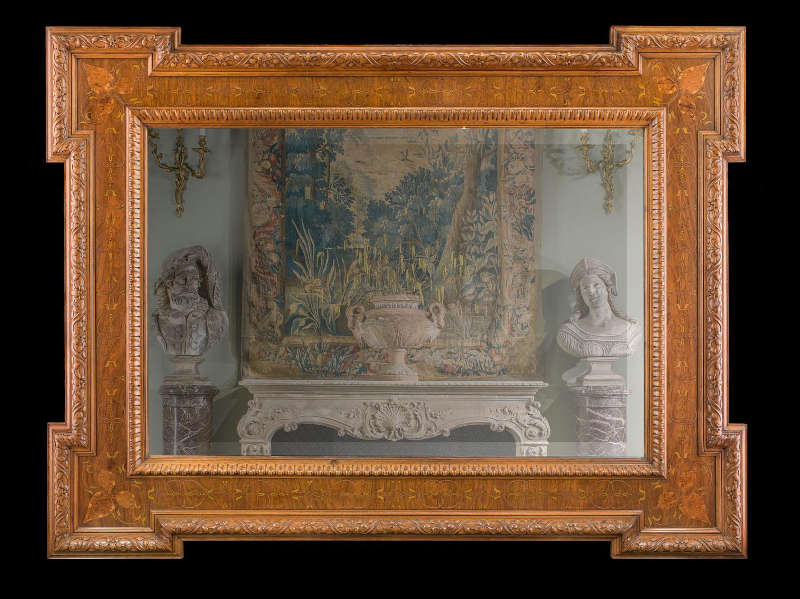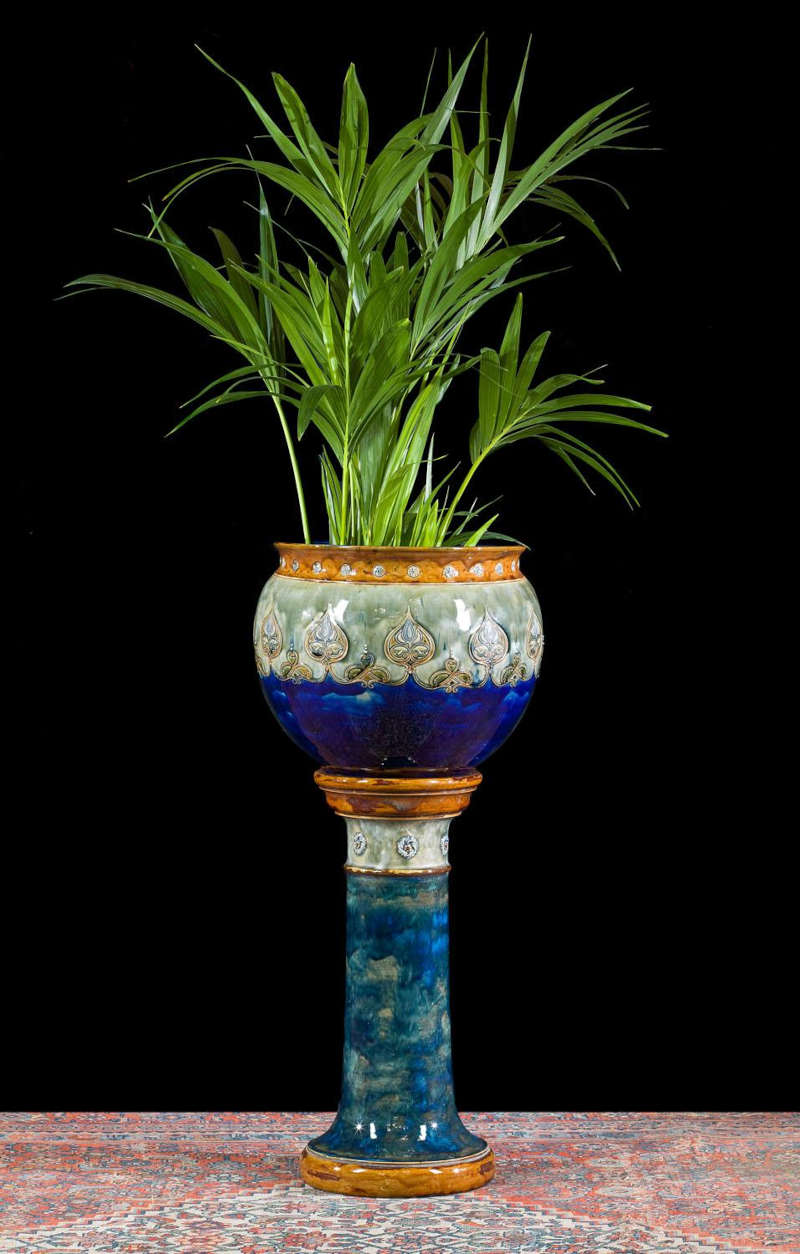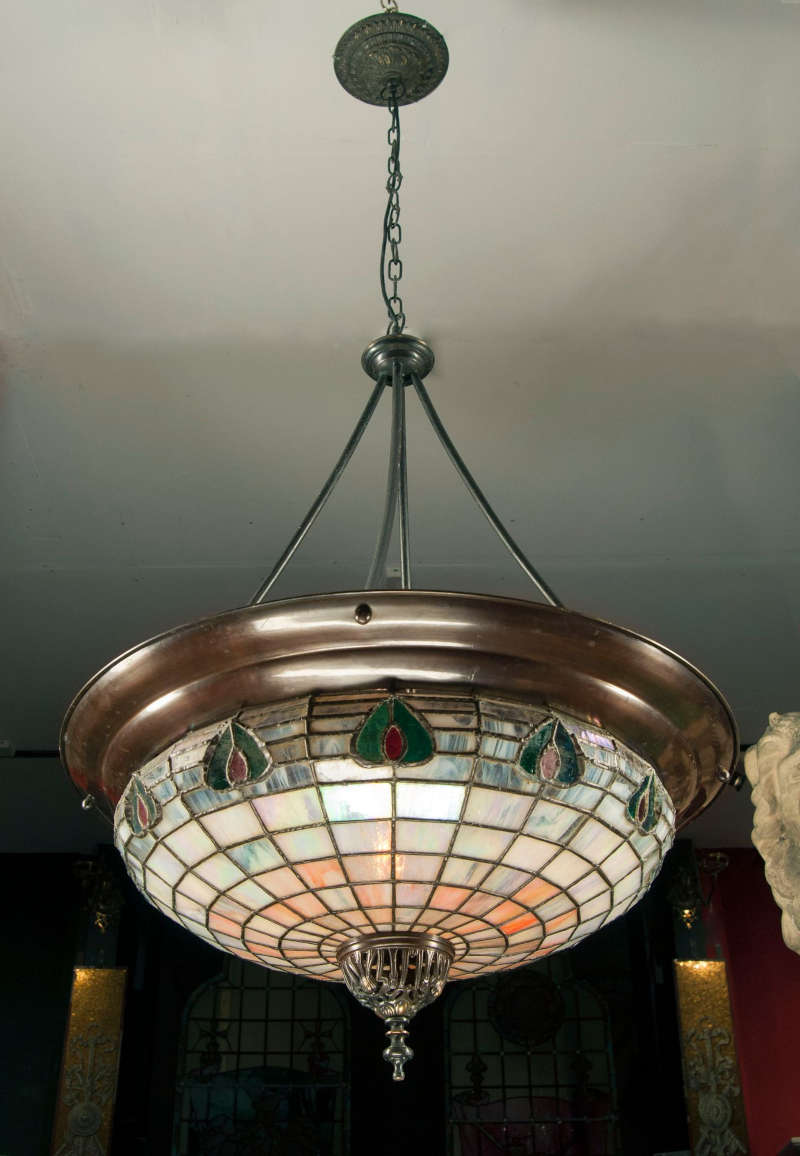As the nineteenth century drew to a close and the dawn of the twentieth loomed, a striking new fashion in art, architecture and interiors emerged.
Art Nouveau was arguably to become the prominent art style of the late-Victorian and Edwardian eras in Britain as well as a powerful force in Europe and across the Atlantic.
More than a century since its emergence, Art Nouveau furniture and design still remains a popular style within the home, offering a striking interior choice.

× 
What is Art Nouveau?
Art Nouveau is a French term meaning “new art”
The term is French. Art Nouveau is a French term meaning “new art” - an appropriate label for the style, since its pioneers sought to create art and objects that reflected the rapidly evolving time in which they lived.
That said, Art Nouveau is not without significant influences. The ornate craftsmanship of the British Arts and Crafts movement and the curvature of Rococo lines are often recognisable, along with the delicacy of Japanese furniture.
Frequently seen characteristics of Art Nouveau are overt allusions to nature, with floral and tree-like references abounding. This includes stained glass windows, painted decorative objects, vases, and lamps for example.
See below one of our stock items - an Art Nouveau Doulton Lambeth stoneware jardiniere on stand, decorated in shallow relief with a stylised flower pattern.

× 
It can be helpful to consider Art Nouveau alongside Art Deco, which rose to prominence following the First World War
Curvature of lines and delicate, intentionally placed asymmetry are other common traits which reflected the high-level of skill required to produce Art Nouveau pieces.
The quality of artistry and often extraordinary hand-crafted elements of Art Nouveau design go some way to explaining its permanence and continued demand.
It can be helpful to consider Art Nouveau alongside Art Deco, which rose to prominence following the First World War.
The sharp, bold, and symmetrical shapes of Art Deco design mark a contrast to the flowing curves of Art Nouveau and provide a straightforward and largely accurate way of distinguishing between the two early twentieth century art styles.
Prominent examples of Art Nouveau style
Belgium and France are often considered the “hot bed” for Art Nouveau’s development
Although Art Nouveau has recurring stylistic features, it is a design style that has been broadly interpreted by different artists from various regions.
For example, in Glasgow, Art Nouveau has a distinct interpretation known as the “Glasgow Style” in which straight lines are retained and blended with ornate features and decorative choices. This interpretation of Art Nouveau is often also referred to as the “Mackintosh Style” after the husband-and-wife duo credited for its inception.
Belgium and France are often considered the “hot bed” for Art Nouveau’s development. In the 1890s we saw the first Art Nouveau apartments and houses appear – Louis Majorelle, a French decorator, was one of the outstanding designers of Art Nouveau style furniture.
Victor Horta and Hector Guimard became prominent artists of the Art Nouveau style, demonstrating a synergy between architecture and furniture; there is minimal separation in style between the architecture of the building and its interior.
Famous examples of the work of this pair are Horta’s Hôtel Tassel and Guimard’s Castel Béranger. However it’s worth noting that in spite of the inherent “newness” of their work, evidence of both Gothic and Rococo design styles is pronounced.
The Spanish “Modernismo” movement, driven by the renowned Antoni Gaudi was also hugely important; with his distinct flowing architectural style still remaining popular today.
Art Nouveau and interior design
Recalling its links to nature, Art Nouveau pieces tend to be effective in rooms where a natural colour palette is used
While Art Nouveau interiors tended to be originally found in homes of that style and period, interior design has evolved and we now often see individual Art Nouveau rooms in a house or simply one-off pieces incorporated alongside other furniture.
Recalling its links to nature, Art Nouveau pieces tend to be effective in rooms where a natural colour palette is used. Previously, elaborately patterned wallpaper was commonly seen in Art Nouveau interior design. Modern trends have shifted away from this somewhat, but in the right setting it can still be effective.
Consider that in many cases, Art Nouveau furniture promotes style over function. If you’re considering a single Art Nouveau room within your home, it may be prudent to opt for it being the bedroom or drawing room as opposed to the kitchen or kids’ playroom.
Lighting and floor choices are important when it comes to Art Nouveau interiors. The ornate nature of Art Nouveau pieces should be emphasised by being suitably lit and should either stand-out from, or complement, the flooring material or colour.
See below an example of an Art Nouveau ceiling light in the Tiffany style:

× 
Given the distinct nature of Art Nouveau, it is generally recommended to consult an interior’s expert to help guide your choices.
Art Nouveau at Westland London
At Westland, we are very proud of the broad range of antiques and antique furniture pieces we offer, spanning hundreds of years of craftsmanship and design.
As we have discussed, consideration of how best to incorporate Art Nouveau items into your home is important and generally requires a level of expertise.
We’ve discussed how to bring Edwardian decor into your home in a previous blog post, but for a detailed and bespoke discussion into how to best leverage Art Nouveau to make your home really impressive, it’s worth arranging a no-obligation conversation with one of our experts.
Why not get in touch today?